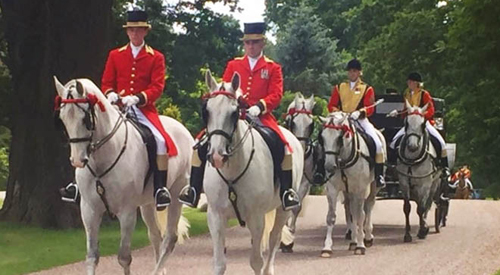Behind the scenes at Windsor Great Park

WITHOUT even realising it, you will have been to Windsor Great Park in the company of some very famous names.
Tarzan, Harry Potter, Chief Inspector Barnaby and even the Teletubbies have all been seen striding through the stunning 18,000 acres with its sweep of ancient forest, historic parkland, Fifties villages and formal gardens.
But the park’s popularity as a location for film and TV is only a tiny part of life on the estate with its rich heritage stretching back more than 1,000 years, each twisting pathway offering a journey through English history.
One thing is certain, however – the current royal family’s usage of the park always takes precedence over everything else and the late Duke of Edinburgh acted as ranger of the Great Park for 70 years.
It was William the Conqueror who used the park as his hunting ground 1,000 years ago and was the first monarch to build a residence there.
The outer walls of Windsor Castle as they stand today were built by him and some of the oak trees he planted can still be seen.
The original planting of the Long Walk, the three-mile avenue leading to Windsor Castle, was started by Charles II and Queen Victoria
enjoyed entertaining guests at picnics on the shores of her beloved Virginia Water.
Today, the Windsor Estate boasts wide expenses of commercial pine forests alongside its ancient oaks, ponds and lakes as well as 15 miles of private roads.
The park, which is free to enter and is open to pedestrians all year from dawn to dusk, contains the largest collection of oak and beech trees
in northern Europe plus important habitats for ground-nesting birds.
These require the attention of a dedicated team whose priority is the long-term wellbeing of the landscape.
The covid pandemic presented the park with unprecedented issues, explains Nick Day, operations manager for the Crown Estate at Windsor.
He says: “As the impact of lockdown began to be felt, Windsor Great Park saw a huge surge in visitor numbers.
“In the space of just 12 months, an increase of nearly two million visitors was recorded in the park – that’s four million pairs of feet – creating wear and tear and damage to an already fragile landscape.
“This impact became visually apparent in a short space of time and it did mean we needed to find different ways of managing our visitors and the many different groups who use the park.
“A huge increase in cyclists was also noticed and the conflict between those and other user groups needed to be resolved too.”
These problems were handled by the dedicated on-site teams that manage all aspects of the estate.
A buildings team manages more than 600 residential and commercial properties and both the commercial forests and the veteran trees need careful management, which is carried out by a team of foresters and arborists.
This year has also seen the estate gearing up for the Queen’s platinum jubilee next month when celebrations will include a long weekend of events on the Long Walk. Beacons will be lit at Cambridge Gate and on Snow Hill as part of the national beacon lighting planned for the evening of Friday, June 2.
Nick says: “The Saturday and the Sunday of the long weekend will see the Long Walk filled with picnickers and revellers who can enjoy watching activities from London on giant screens.
“A cavalcade of 70 vehicles, one representing each year of the Queen’s reign, will process through the Great Park on June 4 and that evening the concert taking place outside Buckingham Palace will be screened live in Windsor.
“On the Sunday, there will be the world’s longest picnic table stretching from Cambridge Gate towards Albert Road – a table to which all will be welcome to bring their picnics and celebrate in style at a street party.”
To mark the platinum jubilee in a more lasting way, two avenues each containing 70 trees have been planted to be enjoyed by future generations as part of the Queen’s Green Canopy project.
Nick says: “This planting is symptomatic of the way the estate looks forward to its future. The young oak trees of today will be the victories of 1,000 years’ time.
“The team at Windsor are custodians of a very important part of our national and natural history and all that we do on the estate is done with the long-term health, wellbeing and future of the estate in mind.”




.jpg)